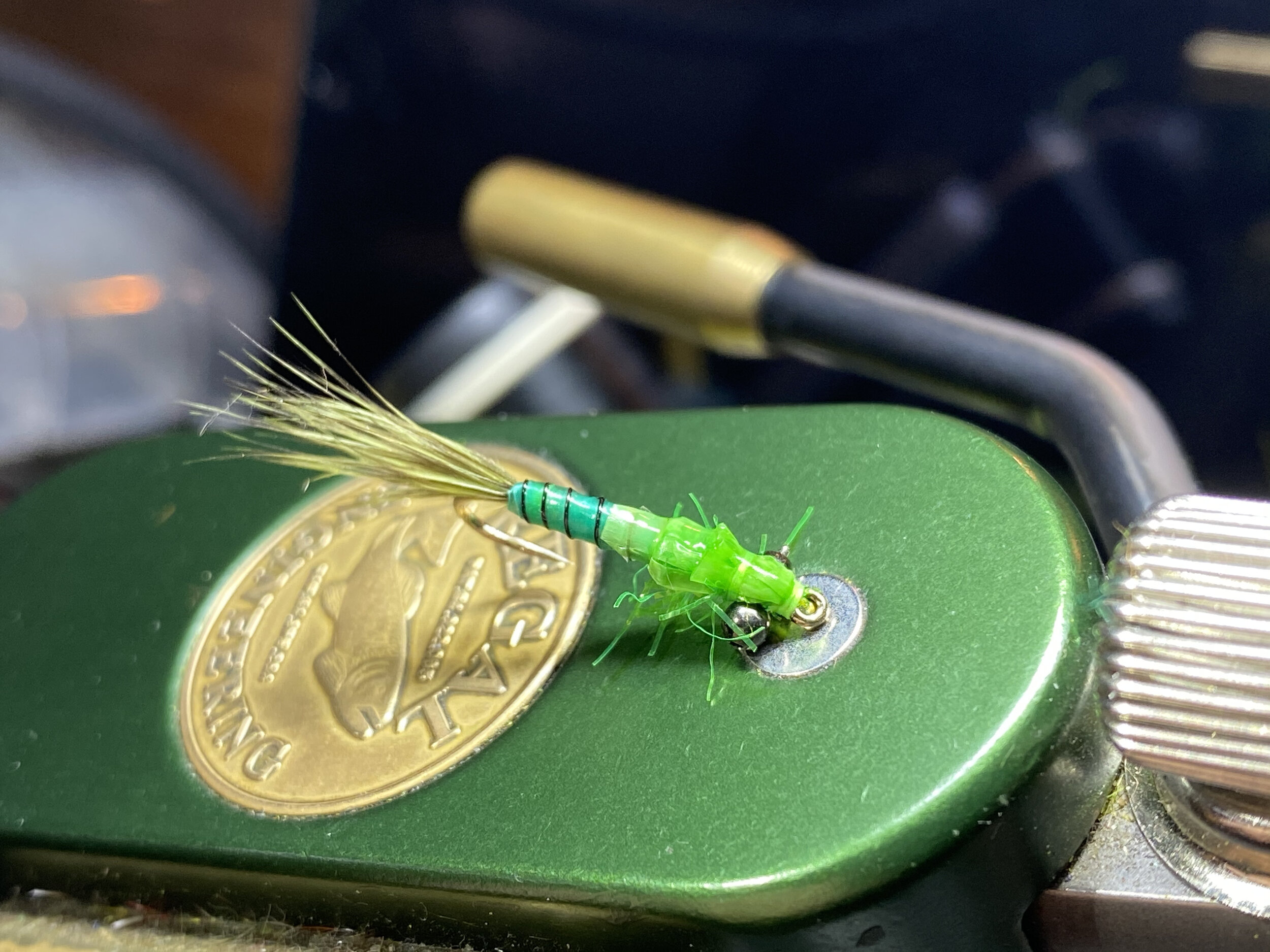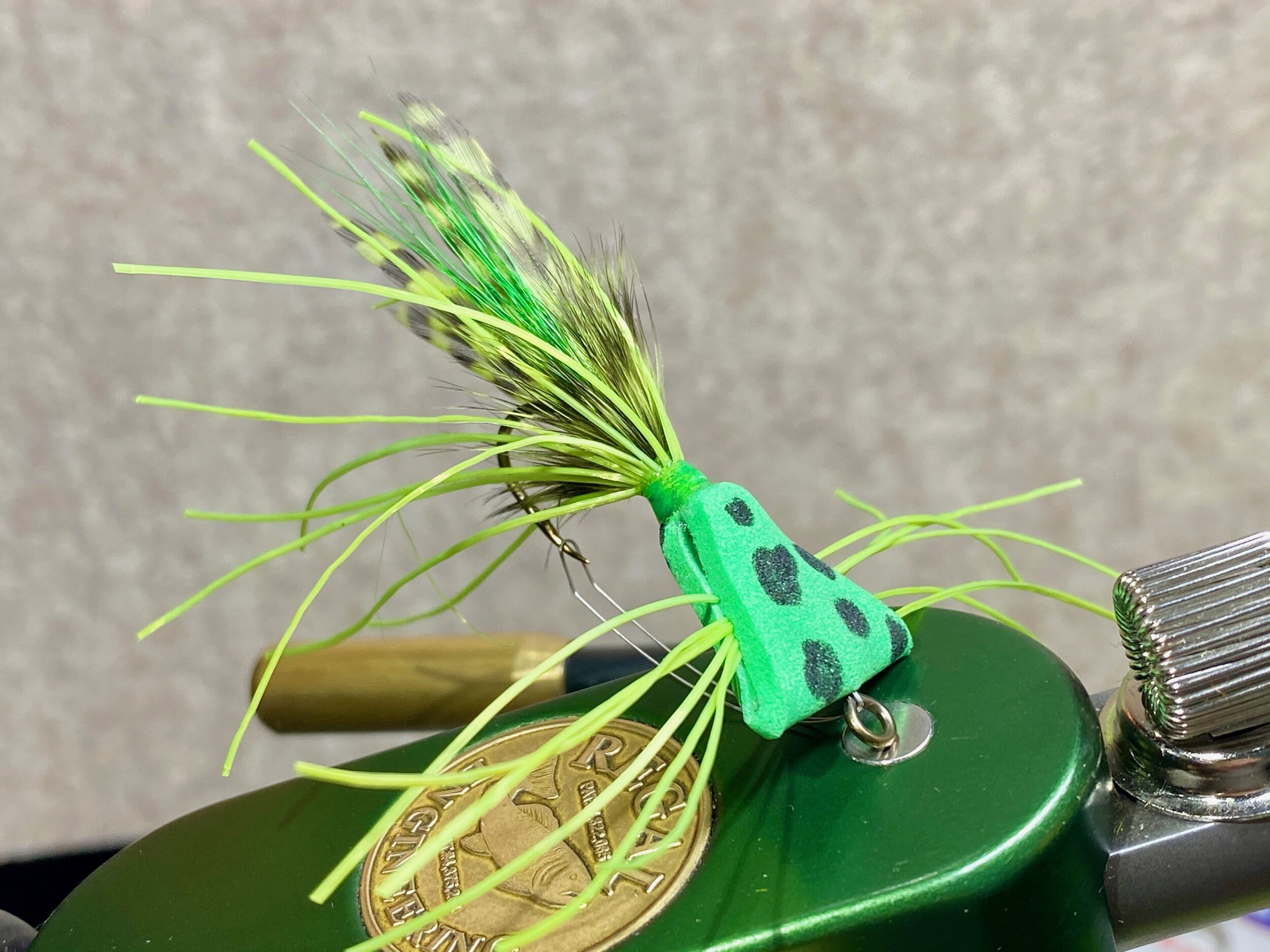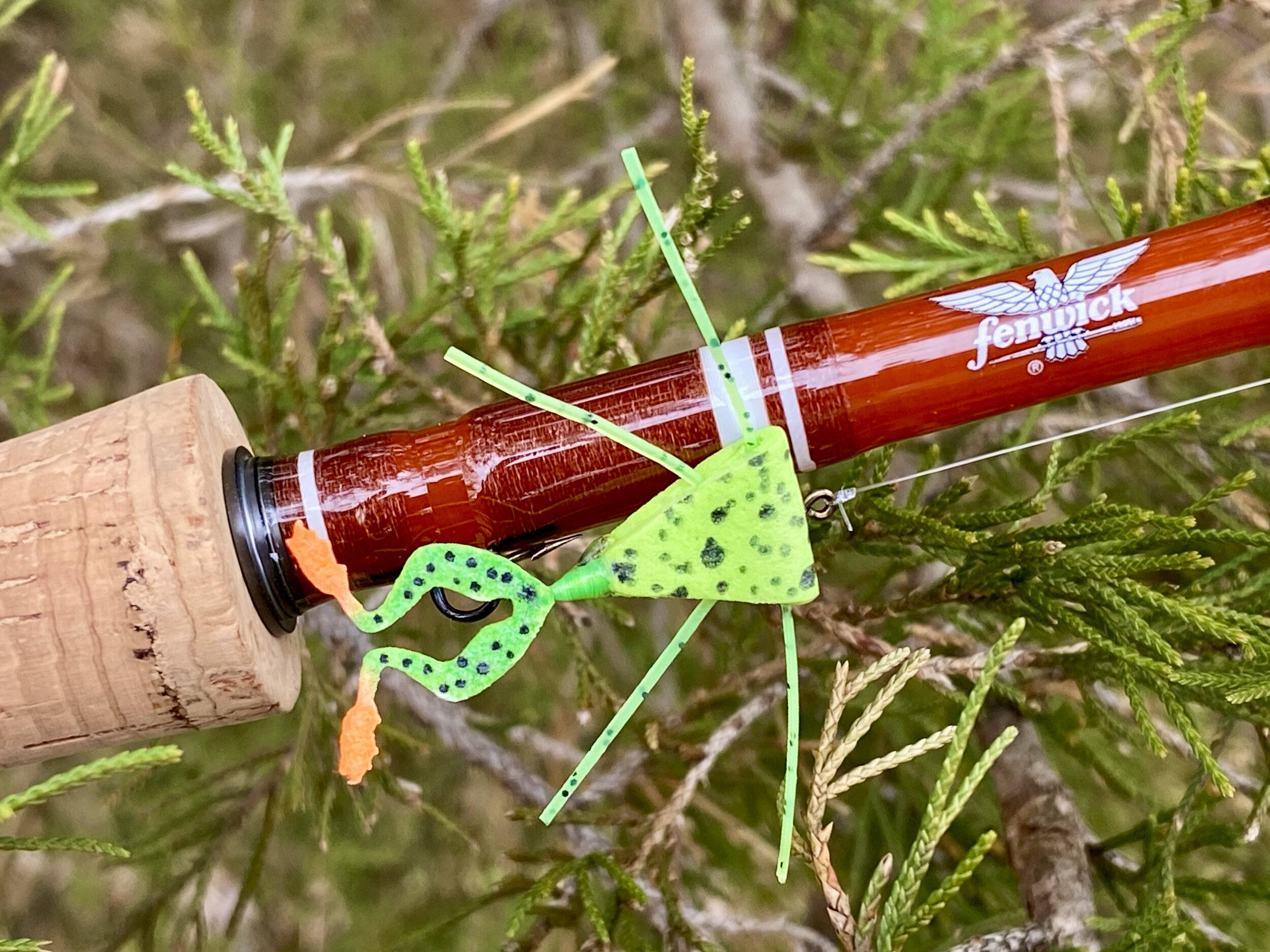Damselfly nymphs are probably my favorite warm water nymph patterns. Damselflies are found everywhere (at least in my neck of the woods), and many fish species relish them. I typically use damselfly nymph patterns in natural hues of olive, green, tan, and brown. However, during certain times of the year, my local panfish and bass seem to key in on brightly colored flies. For those occasions, I thought a bright damsel nymph would be just the ticket.
Read moreFly Tying Friday - The Easter Basket Damselfly Nymph
The Easter Basket Damselfly Nymph is a damselfly with a little bling!




